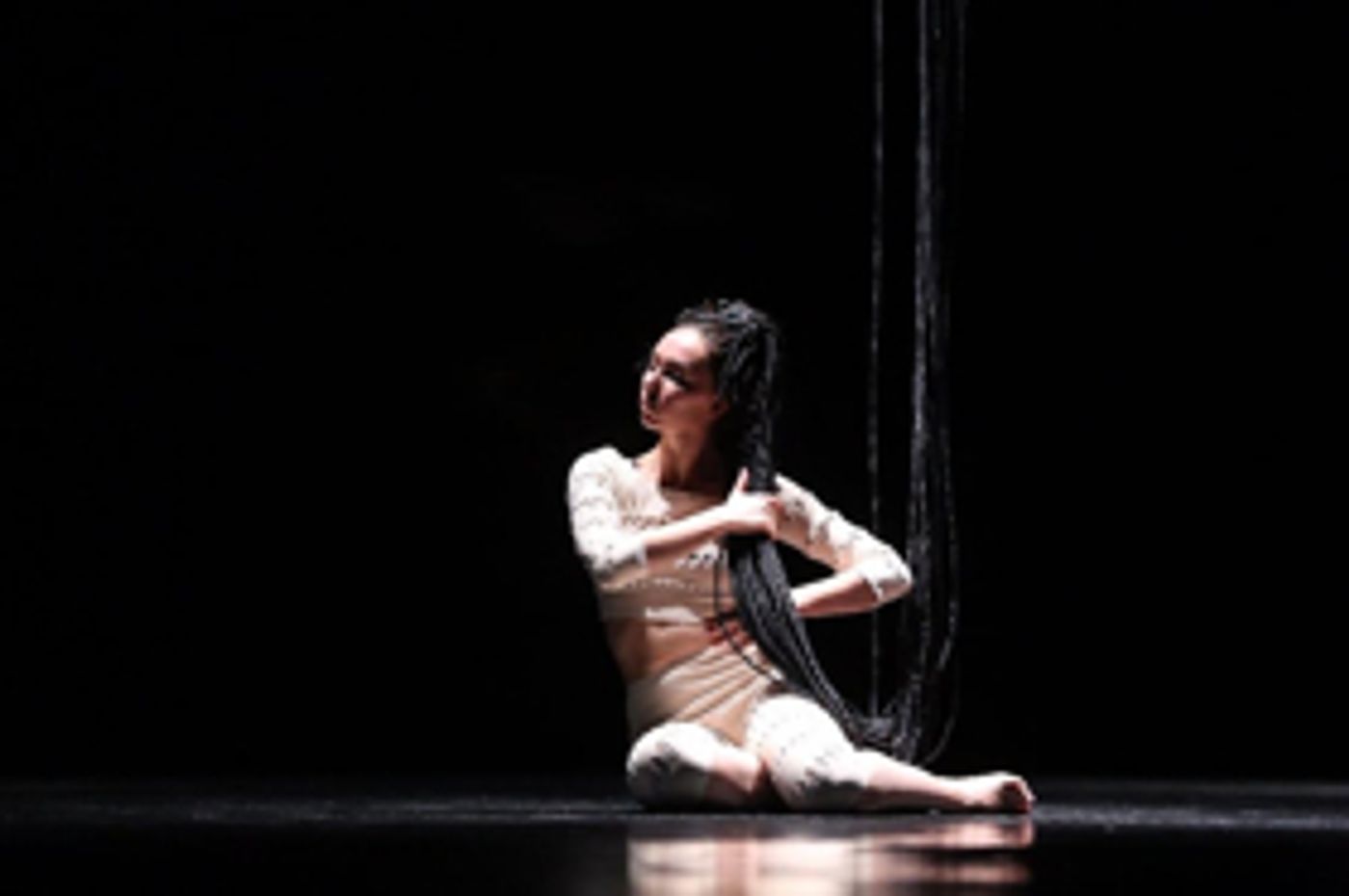Review: LA FRESQUE Fantasizes at Zorlu Center PSM

Parisian choreographer Angelin Preljocaj sold out Europe's largest performing arts venue with his modern ballet, La Fresque (2016) on November 18th, walking onstage after the show to receive the Honorary Award from Istanbul's Theater Festival at Zorlu Center PSM. In the footsteps of his Snow White (2008) and Siddhartha (2010), he carried the fantastical, folkloric spirit of his ingenious artistic signature in narrative movement with La Fresque, subtitled after its inspiration from the eponymous medieval Chinese tale, "The Painting on the Wall" also known simply as "The Painted Wall" from the collection, "Strange Stories from a Chinese Studio" by the medieval intellectual Pu Songling, first published twenty-five years after his death in 1740.
Early in the 18th century, the Qing Dynasty recognized the literary achievements of Pu Songling in his eldest years. He was raised in poverty, though ultimately gifted the world his escapist flights of imagination enough to steal hearts and lighten minds in endless varieties of contemporary adaptation. "The Painted Wall" could be likened to Oscar Wilde's "The Picture of Dorian Gray" in its motifs, only with a simpler tone. The story begins with a visitor to the premodern capital of Peking, where he stumbles into a vacant monastery and is transfixed by the image of a maiden on the wall mural. Her cherry-red lips look ripe for the picking. The ties that would knot her belt for life in marriage are not yet fastened. He is suddenly flung into the air by a mysterious force, and spies the girl herself, staring back at him as she runs away giggling.
Preljocaj Ballet opens the tale similarly, with two friends, fitted in countrified dress under the exquisite eye of costumer Azzedine Alaïa, as they swing about in bucolic bliss. They are removed from the world until a marching column of blackened uniforms advances towards them, at which point all gravitate together in an entrancing balance of diversely costumed hues and tastefully choreographed steps. From the beginning, the music to La Fresque as composed by Nicolas Godin is hotly contemporary, quaking throughout the theater with downtempo electronica mixed into overt blends of urban noise. The original pair of friends are finally overwhelmed in mutual exasperation by the aesthetic invasion of militantly mobilized newcomers onstage as all collapse into a heap of lifeless men.
The women emerge in a subtle, gaining illumination through the spectacular touch of light design by Éric Soyet, whose sheer foreground facades give way, transparently, to the head-banging of the female dancers who move in contrapuntal clockwork time to evoke the mythological devices of seductive sculptures come to life. Principal dancer Yurié Tsugawa is in her element as she takes off and ascends through the visionary scope of purely original cross-cultural introspection. The movements of the women contrast with volatile poise against the initial impressions of the men, who swayed and bloomed as the women rocked and jolted. There are recurring themes of liberty and imprisonment in La Fresque as Preljocaj makes strong statements regarding the power of human beings to confine themselves and each other in their creations. And when they gender segregation combines into an epicene dance to project the ebullient bravura of togetherness, the story then condenses into its pith as the unrequited love affair of a man with his fictive fancy in a woman inspired by art and born of his mind.
With masks creator Michèle Belobradic and set designer Constance Guisset, the masterful choreography of Preljocaj's La Fresque is a conceptual feast to transcend the senses often owing aesthetic debt to the medieval court styles traditional to Chinese dance. In one sequence, thin rectangular drapes stretch from the invisible heights of the ceiling, bound to the headdresses of the women who appear in high style as from the irresistible illusions of a classic, far-flung era when cultural expression was more naturalist, less mechanical, and more aloof from human practicality. As the central protagonist and doubly the archetypal chimera in the eye of the beholder, Yurié Tsugawa holds her own with fantastic poise, as she leads the audience through psychological landscapes torn from the tea-stained pages of a premodern Chinese text, complete with all of the timeless characters and beings of exotic, ancient fantasy. In particular moments, the techniques of his teachers are visible, as by Merce Cunningham in a scene where all ten dancers are bunched into fitful leaps as they wave small, tight circles into the abstract air.
Preljocaj is a seasoned director as he initially founded his company in December of 1984 and has since produced works that have become repertoire for the most important ballet institutions in the world, namely the La Scala of Milan, New York City Ballet, Paris Opera Ballet. In November of 2016, he released his first feature film with Valérie Müller titled Polina, danser sa vie after working with the French filmmaker Olivier Assayas in 2007 to portray his choreography for the auteurist camera. As immediately influenced by such illustrious collaborators as Karlheinz Stockhausen and Jean Paul Gaultier, he now directs twenty-four resident dancers in the south of France to lead a life immersed in the imaginary plane that once compelled Pu Songling to write his story and daydream of love. The syncretic narratives that move La Fresque conclude in the eye of Preljocaj with a resounding note of optimism, although not without a tinge of tragedy. The transitory and quixotic figments of beauty and love, romance and youth may have a life on the other side of the perceivable frames of realism, if only for those more susceptible to its capricious presence. The muse could very well be equally plying for a mutual touch as it wanders unseen in and out of the reflective fields of pure human creativity.
Photo Courtesy of Istanbul Theater Festival organized by the Istanbul Foundation for Culture and Arts (IKSV)
Reader Reviews
Videos

